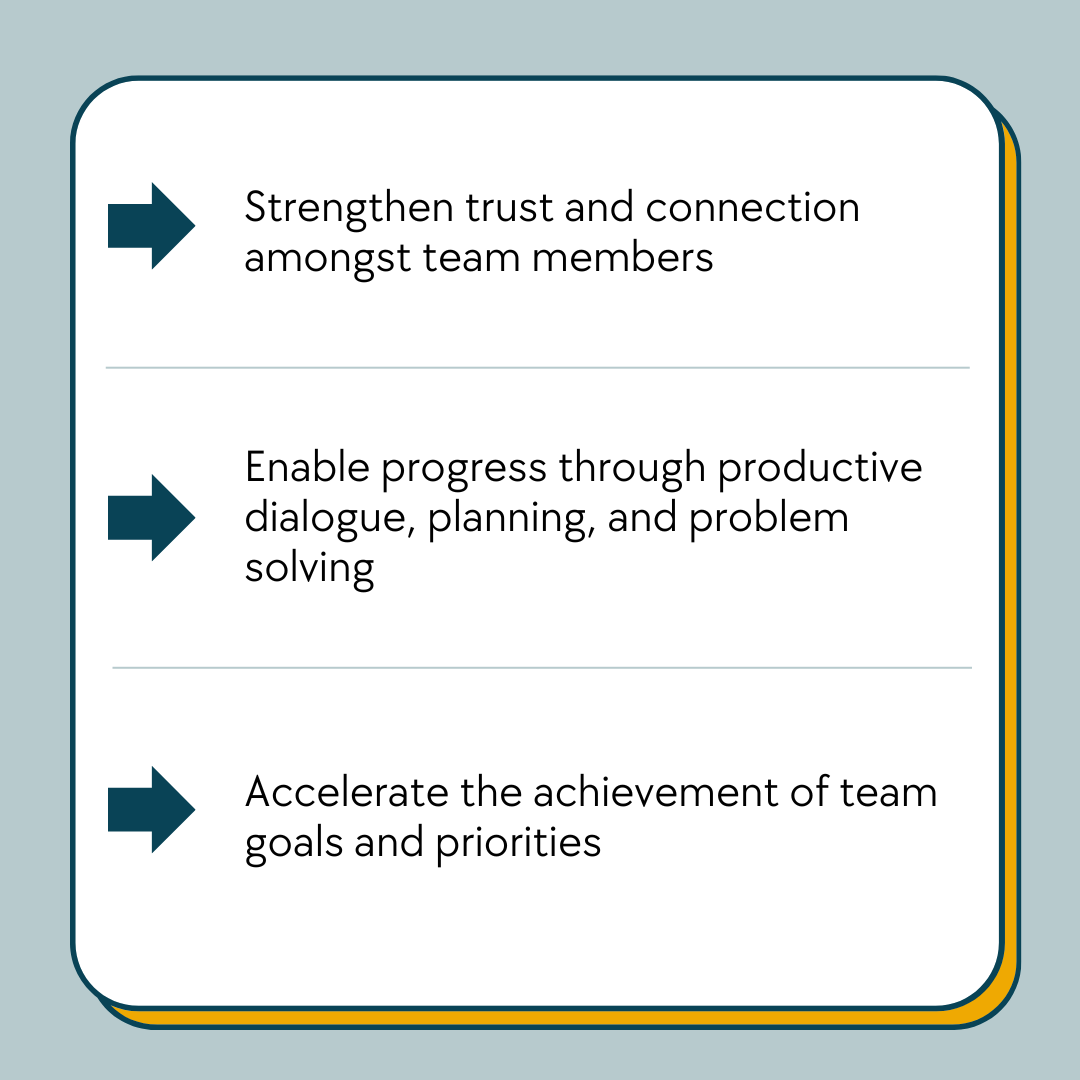5 Ways to Level Up Your Leadership Team Meeting
Last week I was speaking at a conference, unpacking the characteristics of high-performing leadership teams. When I got to the characteristic of “highly disciplined operating rhythms,” I asked the group to raise their hand if they were not satisfied with the quality of their meetings. Ninety-five out of one hundred hands shot up. I think the other five were daydreaming.
And this is almost always the case, isn’t it? Most leaders are unsatisfied with the effectiveness of the meetings they are responsible for facilitating. Just as often, they are not sure what to do about it.
For most people, the word “meeting” brings more negative experiences than positive ones. But therein lies the opportunity. When designed with intention, leadership team meetings can become a source of incredible collaboration, significant alignment, and meaningful connection. Here are five ways to start improving your leadership team meeting.
1. Define the Objective
The first step is simple, but often skipped: clarify the objective. Ask, “What outcomes do we need to achieve together in this time?”
Too many meetings inherit their form from habit rather than intention. A weekly team meeting becomes a status update loop. A quarterly offsite turns into presentation overload. Without a clear purpose, even well-meaning leaders end up burning time instead of building momentum.
Once you have the objective, design the agenda to serve it. For example, if the objective is alignment, carve out time for progress on key priorities and surfacing blockers. If the objective is decision-making, focus the majority of the meeting on the most important tradeoffs. If the objective is connection, build in a thoughtful check-in and space for shared wins.
The agenda should be a tool to achieve the objective, not the other way around. Also, leadership meetings will most likely have more than one objective.
Here are some sample objectives for a leadership team meeting:
2. Begin with a Check-In
We’ve seen it many times: start a leadership team meeting with a simple personal check-in, and even people who have worked together for years end up learning something new about one another.
The way you start a meeting shapes the energy for the rest of the conversation. A brief check-in helps people transition into the room, leave distractions behind, and connect as humans before diving into content.
It can be as simple as asking each person to share a highlight from the week, a challenge they are facing, or one word to describe how they are arriving. In just a few minutes, the team shifts from scattered individuals to a connected group.
When you have a lot going on and feel especially time constrained you will be tempted to skip the check-in, but there is a great risk when you do. When it's skipped, meetings tend to stay transactional and people can be slow to warm up. When it's included, conversations deepen more quickly and trust compounds over time. A simple check-in has incredible power to transform both the vibe of the meeting and the connection between team members.
Sample check-in Questions:
3. Use a Kanban Board
Technology can either distract from meetings or dramatically improve them. The difference is whether the tool reinforces the meeting’s objectives and helps to keep the team organized and accountable. A kanban board is a visual tool that helps teams manage work by showing the flow of tasks through different stages of a workflow, typically represented by columns.
Using a kanban board in tools like Coda and Notion can serve as the organizational backbone for leadership team meetings. Three ways to leverage a kanban board in particular stand out:
Monitoring strategic goals: A shared dashboard keeps team priorities front and center. Instead of drifting into updates, the group can quickly see what is on track, what is at risk, and where leadership attention is needed.
Documenting and prioritizing issues: A kanban board makes it easy to capture and rank the topics that deserve discussion. This ensures synchronous time is not wasted on the loudest issue of the week, but instead focused on what truly matters.
Documenting Action Items: As actions come up in the meeting, you can document them in real time in a place where everyone can see them. This helps to both ensure you don’t forget about them and that you are building a culture of accountability.
Example of a meeting facilitator kanban board in Coda
With the right tools, the leadership team meeting becomes a disciplined space to focus on strategy and decisions, not just updates.
4. Multiply Effectiveness with Async Practices
Even the best-designed meeting can fail if people are not prepared or if the wrong work is being done in the room. Preparation and asynchronous collaboration are two of the biggest multipliers of meeting effectiveness.
Light asynchronous work before the meeting allows participants to show up sharper. Reviewing a dataset in advance, adding comments in a shared doc, or providing context through a short Loom or memo means the group can skip the lengthy updates and use their time together for what really matters: debate, discussion, and decision-making.
Preparation is the other side of the equation. If you have an action item due, come ready to share progress. If you are the lead on a shared priority, arrive with a crisp status update. If you are facilitating the check-in, bring a thoughtful question. Preparation signals respect for the group’s time and helps every person contribute meaningfully.
The impact is twofold: asynchronous work ensures everyone arrives informed, and preparation ensures they arrive ready. Together, they turn meetings from draining obligations into high-value conversations that move the work forward.
5. Prioritize the Right Conversations Together
The final way to improve your leadership team meeting is to make it the place where the most important conversations happen. Too often, difficult issues are handled in a series of one-on-ones, which creates silos, mixed messages, and uneven ownership.
Instead, use the leadership team meeting as the forum to wrestle with challenges together. Put the hard conversations on the table: strategic tradeoffs, cultural tensions, resource allocation, performance issues. When the group addresses these as a team, three things happen: silos break down, alignment increases, and trust deepens.
It may feel uncomfortable at first, but over time it builds a culture where the team leads collectively rather than in parallel.
A Closing Word
Leadership team meetings are the single most important recurring gathering in any organization. Done poorly, they drain energy and erode alignment. Done well, they create clarity, momentum, and connection.
Start with clarity of purpose, transition with connection, leverage tools, multiply effectiveness with prep and async, and make space for the conversations that matter most. These five shifts will not just improve your meetings, they will strengthen the way your leadership team leads.
-Shaun & Joe




